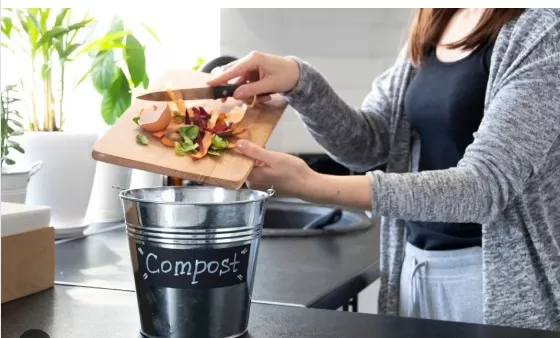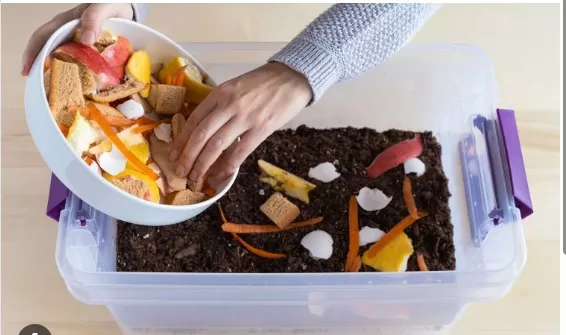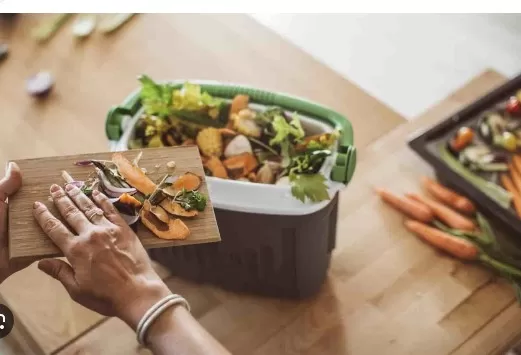Indoor Composting: A Complete Guide and Tips. Embarking on indoor composting for the first time? Look no further than this comprehensive guide to ensure a successful start and produce high-quality compost for your garden.
Indoor composting is an excellent way to recycle kitchen scraps and organic waste, turning them into nutrient-rich compost that can enhance the health and vitality of your garden. Whether you have limited outdoor space, live in an apartment, or simply want to reduce your carbon footprint, indoor composting offers a convenient and sustainable solution.
This guide will provide you with Step-by-Step Instructions on how to begin your indoor composting journey. You’ll learn about suitable containers, the types of materials you can compost, and the proper balance of ingredients needed for optimal decomposition. Discover essential tips for managing odor, maintaining moisture levels, and troubleshooting common issues that may arise.
By following this guide, you’ll not only minimize your impact on the environment but also create a superior compost that will enrich your garden soil, promote healthy plant growth, and contribute to a more sustainable ecosystem. Get ready to dive into the world of indoor composting and reap the rewards of a flourishing garden!
The Advantages of Indoor Composting: Thriving Year-Round, Regardless of Weather

Indoor composting brings forth numerous benefits, with its primary advantage lying in its ability to thrive consistently throughout the year, irrespective of external conditions.
Unlike outdoor compost bins and piles that require protection from direct sunlight, heavy rainfall, and insulation during temperatures below 40 degrees Fahrenheit, an indoor compost bin operates optimally within a temperature range of 40 to 80 degrees. This means that regardless of the season or weather outside, you can continue composting without interruptions.
During the winter months, outdoor composting faces significant limitations.
Even with insulation, the degradation process slows down considerably due to the cold weather. Conversely, indoor composting maintains a steady pace of decomposition, allowing your compost to continue breaking down effectively.
By eliminating the dependence on outdoor conditions, indoor composting offers a reliable and consistent solution for managing organic waste throughout the year.
Moreover, the controlled environment provided by an indoor compost bin offers additional advantages.
The absence of direct sunlight and heavy rainfall reduces the risk of excessive moisture accumulation or the compost becoming waterlogged. This ensures that the composting process remains balanced, preventing unpleasant odors or the growth of harmful bacteria.
Furthermore, the controlled temperature range creates an ideal environment for the microbes responsible for decomposition, promoting faster and more efficient breakdown of organic materials.
Indoor composting also offers convenience and accessibility.
With an indoor compost bin, you can easily access it at any time, without the need to venture outside in unfavorable weather conditions. This accessibility encourages regular composting practices, making it easier to incorporate sustainable waste management into your Daily Routine.
Additionally, an indoor compost bin is typically smaller in size compared to outdoor alternatives, making it suitable for those with limited space, such as apartment dwellers or individuals with small yards.
In summary, the benefits of indoor composting are abundant.
Its ability to thrive year-round, independent of weather conditions, ensures uninterrupted composting. The controlled environment minimizes the risk of issues associated with excessive moisture or bacterial growth.
Moreover, the accessibility and convenience of indoor composting make it an attractive option for individuals with limited space or those seeking a consistent and efficient waste management solution. By embracing indoor composting, you can actively contribute to reducing organic waste while enjoying the rewards of nutrient-rich compost for your plants and gardens.
Methods of Indoor Composting: Aerobic Composting and Vermicomposting
Indoor composting offers two primary methods for effectively transforming organic waste into nutrient-rich compost: aerobic composting and vermicomposting.
Both techniques provide unique advantages and contribute to sustainable waste management practices.
Aerobic composting involves harnessing the power of microbes found in garden soil to facilitate the decomposition of kitchen waste and other organic materials.
This method relies on the presence of oxygen to support the activity of aerobic microorganisms, which break down the organic matter into compost. The resulting compost, known as “black gold,” serves as a homemade plant fertilizer, enriching the soil with essential nutrients.
This nutrient-rich compost, abundant in nitrogen, phosphorus, and potassium, enhances the fertility of garden soil, promoting healthy plant growth and development.
On the other hand, vermicomposting employs the assistance of worms, typically red worms (Eisenia fetida), and the associated soil microbes to carry out the decomposition process.
The worms consume organic waste and excrete castings, which are a combination of their manure and decayed organic matter. These worm castings, also known as vermicompost, possess remarkable properties that benefit the soil.
Vermicompost not only provides essential nutrients but also enhances the soil’s water retention capacity and acts as a natural barrier against soil-borne pathogens. This makes vermicompost an excellent choice for improving soil quality and plant health.
While both aerobic composting and vermicomposting yield valuable compost, vermicompost holds a slight advantage due to its enhanced characteristics.
The worm castings in vermicompost contribute to better moisture retention in the soil, reducing the need for frequent watering and promoting optimal plant hydration. Additionally, vermicompost contains beneficial microorganisms that help protect plants from soil-borne diseases, creating a healthier growing environment.
When deciding between aerobic composting and vermicomposting for indoor composting, consider your specific needs and circumstances.
Aerobic composting is suitable for those who prefer a straightforward method utilizing garden soil microbes, while vermicomposting is ideal for individuals seeking the added benefits of worm castings and improved soil moisture retention. Both methods contribute to sustainable waste management practices and provide an opportunity to convert organic waste into valuable resources for plant growth and soil health.
What to Include in Your Compost Bin and When to Add Them

To create a successful composting process in your indoor compost bin, it is essential to understand the materials that should be included and the appropriate timing for adding them.
By following these guidelines, you can ensure a well-balanced and productive composting environment.
The composition of your compost bin should consist of a ratio of approximately three parts brown matter to one part green matter.
Brown matter refers to carbon-rich materials, such as shredded newspaper, torn cardboard, and dead leaves. Green matter, on the other hand, includes nitrogen-rich materials like food waste and plant clippings.
This balance of carbon and nitrogen is crucial for the efficient decomposition of organic waste.
To begin preparing your indoor composting collection, start by filling your chosen compost bin to about three-quarters of its capacity with dampened brown matter.
This provides a solid foundation for your composting process. Gently hand-toss the damp bedding within the bin to ensure an even distribution.
Once the brown matter is evenly spread in the bin, it is recommended to sprinkle approximately a cup of garden soil over the bedding.
The garden soil acts as a valuable source of microorganisms that aid in the decomposition process. These microorganisms play a crucial role in breaking down the organic materials into nutrient-rich compost.
After establishing the initial layers of brown matter and garden soil, you can begin adding green matter to the compost bin.
This includes food waste, such as fruit and vegetable scraps, coffee grounds, tea bags, and plant clippings. It is important to chop or break down larger pieces of organic waste into smaller fragments to expedite the decomposition process.
As you continue adding green matter to the compost bin, it is essential to maintain the proper balance with brown matter.
For every layer of green matter, add a layer of brown matter to ensure the carbon-to-nitrogen ratio remains balanced. This helps prevent the compost from becoming too wet or developing unpleasant odors.
Throughout the composting process, it is beneficial to periodically mix the contents of the bin to promote aeration and facilitate the breakdown of organic materials.
This can be done by using a garden fork or compost turning tool to gently turn and mix the contents. Regular mixing helps distribute moisture, air, and microorganisms evenly, speeding up the decomposition process.
By following these guidelines for what to put in your compost bin and when to add them, you can create a well-balanced environment for composting.
Remember to maintain the proper ratio of brown matter to green matter, periodically mix the contents, and monitor the moisture levels to ensure the success of your indoor composting efforts.
Tips for Successful Indoor Composting
Indoor composting can be a rewarding and sustainable practice. To ensure a healthy and thriving compost bin, consider the following tips:
Prevent fruit flies
Avoid leaving waste exposed to air in the compost bin, as this can attract fruit flies.
If you are unable to bury the waste completely in soil or the worm layer, cover the exposed scraps with additional soil or brown matter to deter fruit flies.
Chop or tear kitchen scraps
Prior to composting, chop or tear kitchen scraps into smaller pieces.
This helps accelerate the decomposition process, as soil microbes and worms can break down smaller scraps more efficiently.
Maintain proper moisture
The compost bin should have a moisture level similar to a wrung-out sponge.
If the compost appears visibly dried out or the decomposition process seems stalled, water the compost with a watering can as needed. Conversely, if the compost becomes too moist, add shredded newspaper or dead leaves (brown matter) to absorb excess moisture.
Keep essential supplies nearby
To facilitate easy maintenance, keep a watering can and a bag filled with shredded newspaper or dead leaves in close proximity to the compost bin.
This allows for quick refills of water or brown matter when the compost becomes too dry or too moist.
Monitor vermicomposting
When vermicomposting with worms, pay attention to the types of food the worms are not eating.
Uneaten food will rot instead of decompose, so it is best to avoid composting those items in the future to prevent unpleasant odors or pest issues.
Manage worm population
In a healthy vermicompost bin, worms will breed and multiply.
If you find yourself with more worms than you can feed, consider removing the excess worms and sharing them with friends or neighbors who have compost bins. This helps maintain a balanced worm population and allows others to benefit from vermicomposting.
By implementing these tips, you can maintain a healthy and productive indoor compost bin.
Remember to pay attention to moisture levels, properly prepare kitchen scraps, and address any issues promptly to ensure successful indoor composting.
Utilizing Your Indoor Compost

Once your indoor compost or vermicompost is ready, you can employ it in various ways to enhance the growth and health of your plants.
Here are some suggestions for utilizing your compost effectively:.
Lawn conditioner
Sprinkle compost directly over your grass as a natural lawn conditioner.
This will enrich the soil, promote nutrient absorption, and contribute to a healthier, greener lawn.
Nutrient-rich soil
Mix one part compost with two parts potting soil to create a nutrient-rich soil blend for your raised garden beds.
This mixture will provide essential nutrients to support plant growth and vitality.
Mulch for planters
Spread a layer of compost as mulch over the potting soil in your indoor or outdoor planters.
This acts as a protective cover, helping retain moisture, suppress weeds, and enhance soil fertility.
Compost tea
Collect any liquid that drains into the tray below your compost bin and dilute it with water (a ratio of ten parts water to one part compost liquid).
This creates compost tea, a nourishing liquid fertilizer. Use a spray bottle to apply the compost tea onto the leaves of your plants.
This foliar application can boost plant health and nutrient absorption.
Boosting soil microbial activity
When starting a new composting cycle, sprinkle a handful of finished compost from the previous batch over the soil layer in the bin.
This introduces beneficial soil microbes, promoting their activity and accelerating the decomposition process.
By incorporating your compost into lawn care, gardening, mulching, compost tea, and compost layering, you can maximize the benefits of your indoor composting efforts.
Enjoy the rewards of healthier plants, improved soil fertility, and a more sustainable approach to waste management.
*The information is for reference only.